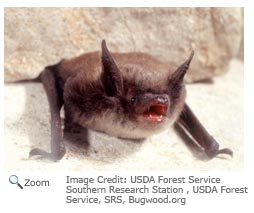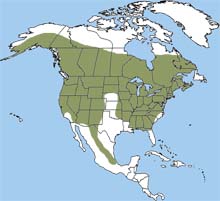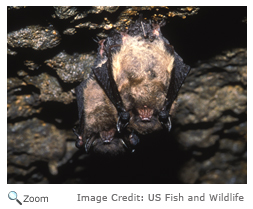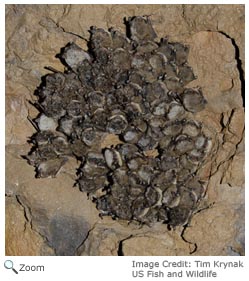Little Brown Bat - Myotis lucifugus |
||||||||
Description Range HabitatThe little brown bat lives along streams and lakes. It forms nursery colonies in buildings. In the winter, it hibernates in caves and mines.
| Diet Life CycleMating season is in the fall, but fertilization doesn't happen until spring. In the spring, little brown bats form huge nursery colonies. A nursery colony may have thousands of bats in it. The female little brown bat gives birth to only one baby. During birth, the female hangs right-side up! The baby bat attaches itself to a teat. It nurses for about two weeks. It flies when it is three weeks old. Behavior |
|||||||


 The little brown bat is found in most of the United States and Canada, except for the south central and southeastern United States and northern Alaska and Canada.
The little brown bat is found in all parts of New Hampshire.
The little brown bat is found in most of the United States and Canada, except for the south central and southeastern United States and northern Alaska and Canada.
The little brown bat is found in all parts of New Hampshire. 
